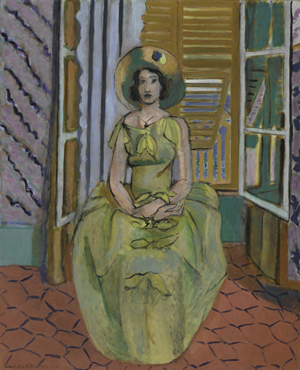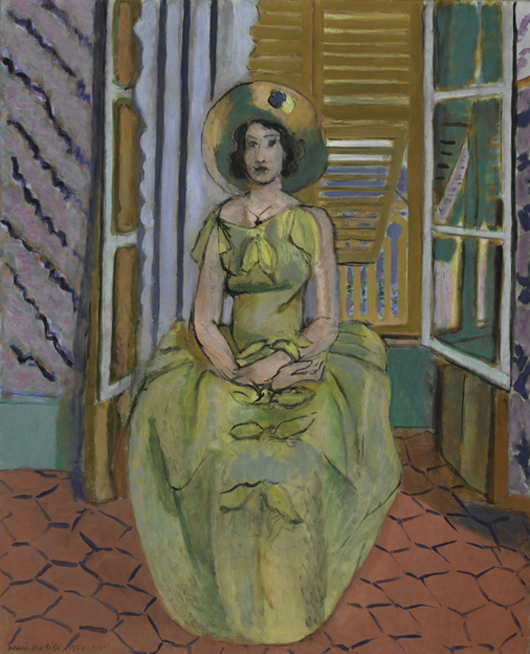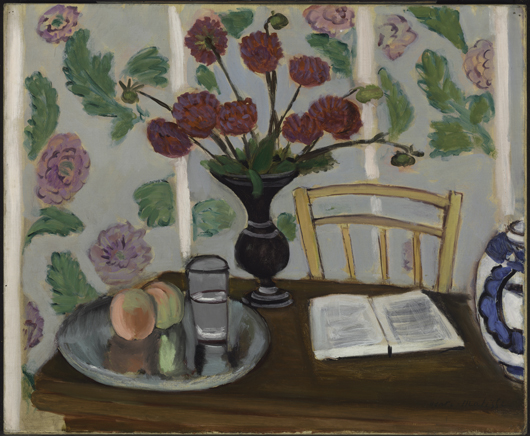
INDIANAPOLIS – The Indianapolis Museum of Art will host a major exhibition of paintings, sculptures and works on paper by the great French artist Henri Matisse (1869–1954), from Oct. 11 to Jan. 12.
The exhibition is drawn almost entirely from the Baltimore Museum of Art’s Cone Collection, which is one of the most comprehensive collections of Matisse’s art in the world. “Matisse, Life in Color: Masterworks from The Baltimore Museum of Art” is expected to draw large crowds.
“Henri Matisse’s strong use of color and pattern was incredibly influential among avant-garde artists of the 20th century, and his work remains a touchstone for many artists working today,” said Dr. Charles L. Venable, IMA director and CEO. “I have no doubt that his works will not only dazzle visitors with their sheer beauty, but also will inspire them to think about art in new ways.”
Formed by two sisters from Baltimore, Dr. Claribel Cone (1864–1929) and Miss Etta Cone (1870–1949), the Cone Collection forms the core of the BMA’s modern art holdings and is regarded as one of the world’s preeminent collections of modern art. “Matisse, Life in Color” is organized and circulated by the Baltimore Museum of Art and features nearly 80 works of art from its permanent collection, including paintings, sculptures, prints and artist books. Among the exhibition highlights are:
– Large Reclining Nude, 1935. Large Reclining Nude is one of Matisse’s most compelling paintings of the 1930s and an important work in the transition to his late painting style and to his paper cutouts. He worked on the painting for several months and documented the stages of its evolution through photographs. Matisse progressively flattened the image, striving for a balance between the sinuous arabesques of the figure and the regular grid pattern of the background.
– The Yellow Dress, 1929-1931. In 1929, Matisse was in the midst of a painting block. His production fell off sharply, and he left a number of paintings unfinished. He began The Yellow Dress in September 1929, but he struggled for another two years to bring it to a satisfying conclusion as he sought to achieve a balance between modeled form and outline. Matisse simplified and enlarged the figure and the dress as the painting progressed, transforming the domestic subject into something monumental and timeless.
– Seated Odalisque, Left Knee Bent, Ornamental Background and Checkerboard, 1928. After seeing an exhibition of Islamic art in Munich in 1910, Matisse became intrigued by the decorative aesthetics of Near Eastern and North African cultures. Following a trip to Morocco in 1912-13, images of women in North African costume begin to appear in his work. The strong patterning of the carpets and textiles dominates this painting.
– The Serpentine, original model 1909. This cast circa 1930 The Serpentine is one of Matisse’s most radical and open sculptures, composed as much with empty spaces as with sculptural masses. The pared-down figure is an ensemble of lyrical curves twisting through space, freeing the forms from literal anatomical references to create a striking metaphorical image in which the woman is rendered like a plant growing out of the ground.
In conjunction with the exhibition, the IMA will host a series of programs and activities to complement the visitors’ gallery experience. One of the most compelling stories around this exhibition is how Etta and Claribel Cone, two sisters from Baltimore, built this singular collection.
Among these events will be a lecture by a member of the BMA’s curatorial staff, who will come to Indianapolis to share his knowledge of how the works in “Matisse, Life in Color” illuminate this extraordinary relationship between artist and patron. Henri Matisse (French, 1869–1954) was one of the most influential artists of the 20th century, whose stylistic innovations fundamentally altered the course of modern art. In a career spanning six decades, his achievements in painting, sculpture, drawing, graphic arts, book illustration and paper cutouts earned the acclaim of collectors, critics and several generations of younger artists.
Matisse initially trained as a lawyer before developing an interest in art. He moved to Paris to study painting in 1891. He followed the traditional academic path first at the Académie Julian and then at the École des Beaux Arts, but he also discovered the dynamic and experimental contemporary Parisian art scene. He began to experiment with a diversity of styles to create his own pictorial language.
In 1905, Matisse exhibited at the Salon d’Automne with André Derain, and their shockingly bold experiments using color to structure their paintings brought them the derisive nickname “Les Fauves” (Wild Beasts). Across a succession of styles, Matisse aimed to discover the “essential character of things” through art that expressed balance and serenity, as he explained in his Notes of a Painter (1908).
He experimented throughout his career with abandoning conventional perspective and form in favor of dramatically simplified areas of pure color, flat shapes and decorative patterns.
About the Cone Collection at the Baltimore Museum of Art: With the guidance of their famous friends and fellow art collectors, Gertrude and Leo Stein, the Cone sisters often made trips to Paris where they visited the studios of Matisse and Picasso, and purchased the most contemporary art by the then-emerging artists. The sisters assembled their collection at a time when there were few patrons of the avant-garde and altogether acquired approximately 3,000 works between 1898 and 1949. Thanks to the donations of the Cone sisters, the Baltimore Museum of Art has one of the most comprehensive collections of Henri Matisse’s art in the world. More than 1,000 objects, representing all the mediums in which the artist worked, including the most significant collection of Matisse’s prints and drawings in North America, are now at The Baltimore Museum of Art.
Tickets will go on sale to the public beginning Sept. 1.
For more information, call 317-923-1331 or visit www.imamuseum.org.
ADDITIONAL IMAGES OF NOTE




